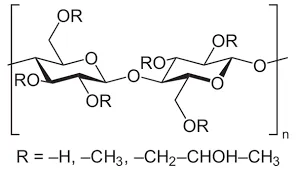
Nov . 11, 2024 04:32 Back to list
Hydroxyethyl Cellulose CAS Number and Its Applications in Various Industries
Understanding Hydroxyethyl Cellulose Properties, Applications, and Significance
Hydroxyethyl cellulose (HEC) is a widely used cellulose derivative notable for its water-soluble properties, making it significant in various industries. With a CAS number of 9004-62-0, HEC is a non-ionic polymer derived from cellulose through a chemical process that replaces hydroxyl groups on the cellulose molecule with hydroxyethyl groups. This modification results in a product with excellent thickening, film-forming, and stabilizing properties, which explain its extensive application across multiple sectors.
Chemical Properties
HEC is characterized by a high degree of purity and viscosity, which can be tailored by adjusting the degree of substitution and molecular weight during its production. The structure of HEC contributes to its amphiphilic nature, allowing it to dissolve in both hot and cold water, forming a viscous solution. This is a significant benefit in formulations where temperature conditions may vary. Moreover, HEC is stable over a wide pH range, making it versatile for various applications, especially in environments where acidity or alkalinity can fluctuate.
Applications in Various Industries
1. Cosmetics and Personal Care Products HEC is widely utilized in the cosmetics industry due to its ability to enhance texture and stability. It acts as a thickener in creams, lotions, and gels, providing a smooth consistency. Moreover, it helps to suspend pigments in color cosmetics and enhances the spreadability of products. Its film-forming properties make it ideal for products like hair gels and styling agents.
2. Pharmaceuticals In the pharmaceutical sector, HEC serves multiple roles. It is often used as an excipient in drug formulations, providing controlled release of active ingredients. Its viscosity-modifying properties help in the production of ointments, creams, and suspensions, improving the bioavailability of medications. Moreover, HEC is utilized in hydrophilic gels for topical applications, ensuring that active compounds remain effective on the skin.
hydroxyethyl cellulose cas number

3. Food Industry HEC is recognized in the food industry as a thickening and stabilizing agent, contributing to the texture of sauces, soups, and dressings. It is also used in gluten-free recipes to enhance the texture of baked goods. As a food additive, HEC is classified as safe and is used to improve the mouthfeel and overall sensory experience of various food products.
4. Construction In the construction sector, HEC is incorporated into cement and plaster formulations to improve workability and adhesion. It acts as a water retention agent, preventing the premature drying of mixtures during application. This property is particularly important in ensuring the longevity and durability of construction materials.
5. Biomedical Applications Hydroxyethyl cellulose has also found its way into biomedical applications, including drug delivery systems and controlled-release formulations. Its biocompatibility and ability to form gels make it suitable for use in scaffolds for tissue engineering and as a component in hydrogels for wound healing.
Environmental Considerations and Safety
As a cellulose derivative, HEC is derived from renewable sources, making it an environmentally friendly alternative compared to synthetic polymers. Additionally, HEC is generally considered non-toxic and safe for use in various applications. However, as with all chemical substances, it is vital to adhere to recommended guidelines for usage and ensure proper handling to minimize environmental impact during production and disposal.
Conclusion
In summary, hydroxyethyl cellulose (CAS number 9004-62-0) is a versatile and valuable polymer with numerous applications across different industries. Its unique properties, including water solubility, thickening ability, and stability under diverse conditions, contribute to its widespread use in cosmetics, pharmaceuticals, food, construction, and biomedical fields. As industries continue to seek sustainable and effective materials, HEC stands out as a significant player, combining performance with environmental responsibility. Understanding its applications and properties not only highlights its importance but also encourages further exploration into novel uses and formulations that leverage its unique characteristics.
-
Versatile Hpmc Uses in Different Industries
NewsJun.19,2025
-
Redispersible Powder's Role in Enhancing Durability of Construction Products
NewsJun.19,2025
-
Hydroxyethyl Cellulose Applications Driving Green Industrial Processes
NewsJun.19,2025
-
Exploring Different Redispersible Polymer Powder
NewsJun.19,2025
-
Choosing the Right Mortar Bonding Agent
NewsJun.19,2025
-
Applications and Significance of China Hpmc in Modern Industries
NewsJun.19,2025







